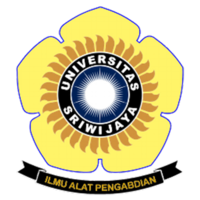Artificial Intelligence dalam Pengendalian Hama dan Penyakit Tanaman
Abstract
Herlinda, S., Nursalim, Y.A., Anggraini, E., &Athalina, G. (2024). Artificial intelligence in pest and disease management. In: Herlinda S et al. (Eds.), Prosiding Seminar Nasional Lahan Suboptimal ke-12 Tahun 2024, Palembang 21 Oktober 2024. (pp. 27–47). Palembang: Penerbit & Percetakan Universitas Sriwijaya (UNSRI).
The article reviews the developments of artificial intelligence (AI) in the control of pests and diseases in agriculture. Artificial intelligence refers to the ability of digital computers or computer-controlled robots to do activities typically associated with human intelligence by emulating cognitive functions. At present, artificial intelligence is employed across various sectors, including healthcare, education, and agriculture. In agriculture, AI has been used as a mechanism for pest and disease management in plants. AI offers advantages due to its labor-saving efficiency, targeted effectiveness, and sustainability, as it ensures safety for users, the environment, and the items manufactured. Robots, in conjunction with sensors, satellites, and drones, can precisely detect symptoms and coloration of diseased plants and those infested by pests. This AI can precisely identify an appropriate methods to control plant pests and diseases. AI can facilitate routine processes in integrated pest management, such as monitoring ecosystems (biotic and abiotic factors) and determining the right timing and methods for control, thereby achieving sustainable pest management.
The article reviews the developments of artificial intelligence (AI) in the control of pests and diseases in agriculture. Artificial intelligence refers to the ability of digital computers or computer-controlled robots to do activities typically associated with human intelligence by emulating cognitive functions. At present, artificial intelligence is employed across various sectors, including healthcare, education, and agriculture. In agriculture, AI has been used as a mechanism for pest and disease management in plants. AI offers advantages due to its labor-saving efficiency, targeted effectiveness, and sustainability, as it ensures safety for users, the environment, and the items manufactured. Robots, in conjunction with sensors, satellites, and drones, can precisely detect symptoms and coloration of diseased plants and those infested by pests. This AI can precisely identify an appropriate methods to control plant pests and diseases. AI can facilitate routine processes in integrated pest management, such as monitoring ecosystems (biotic and abiotic factors) and determining the right timing and methods for control, thereby achieving sustainable pest management.
Keywords
drone, computer, robot, satellite, and sensor
Full Text:
PDFArticle Metrics
Abstract view : 606 timesPDF - 743 times
Refbacks
- There are currently no refbacks.

